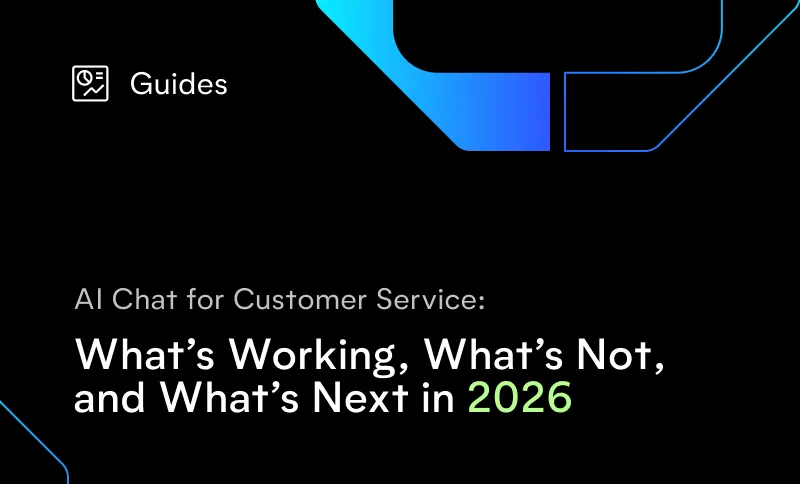
Ten years ago, contact centers looked very different than they do today. Remote work was rare. Cloud solutions were still relatively new. And omnichannel service was just becoming a priority for CX leaders.
Fast-forward to today, and a lot has changed. Agents are harder to hire and retain than ever. Technology has transformed contact center strategies. And customers demand more from every interaction.
For industry leaders, a decade of change has created many new realizations and strengthened other long-standing truths. Tiago Paiva, CEO and Co-founder of Talkdesk is one of those leaders. With a front-row seat to the evolution of contact centers, his view of a decade-plus of changes offers a unique view of what’s next.
Here are five of the biggest learnings from a decade of contact center changes:
1. Customer service is a bigger priority than ever
Over the last decade, customer service has taken center stage, garnering heightened importance at every company. A big reason why is that customer expectations have changed: 90% of CX leaders say customer expectations are at an all-time high.
“12 years ago, customer service was seen as just a cost,” says Paiva. “It didn’t matter what you had, just spend as little as possible.”
But as customers have become more willing to leave a brand after a single poor experience, companies have had to increase their focus on CX to earn their loyalty.
“As consumers, we will drop a brand if the customer support is not good and just move to the next one,” he says. “And companies know that, so they invest a lot more in customer service. Cost still matters, but now there’s this mentality of, ‘Okay, we need to provide great service to our customers. Let’s see how we can get there.’ That has changed a lot in the last 10 years.”
2. Contact centers are still catching up to technology
Talkdesk has become a leading cloud provider in the contact center space. But many of the problems they were solving a decade ago still exist today.
“One thing that has not changed much is that there are still so many contact centers using on-premise solutions,” says Paiva. “They want to go to the cloud and have a solution that works and can replace their products that they are maintaining, and then start innovating. So many companies are still at that stage. That’s been the norm for 12 years.”
With major advancements in technology like AI taking place over the past year, the longer contact centers wait to start evolving their systems, the more catchup they’ll have to play. On the other hand, contact centers who adopt new technologies with urgency will be able to unlock efficiencies faster and gain a competitive advantage in their market.
3. Agents are being used more strategically
As the landscape of customer service has changed, so has the role of agents. The past ten years have seen a surge in cost of living, making agents more expensive to hire and retain. There has also been a sharp rise in unpredictable call spikes that strain agents.
“Everything around customer service has become more expensive,” says Paiva. “Companies are now more thoughtful about the money they are spending, not necessarily by cutting down on software or cutting down on people, but asking how to empower the agents they have so they are more productive.”
Part of this approach includes making sure agents are focused on the right tasks and giving them the tools they need to accomplish them.
“You want to make sure agents have all the tools and information they need to be more productive so contact centers don’t need to hire 20% or 30% more,” he says. “That’s been a theme over the last few years.”
4. The agent of the future will have a different skill set
Underscoring the changing agent landscape is the idea that agents themselves look much different than they did ten years ago. Rather than resolving simple and repetitive tasks for hours on end, brands are looking for agents to be ambassadors and complex problem solvers.
“Agents still play a very important role in the customer service space, but it needs to adapt and it needs to change,” says Paiva. ”One thing agents can do is have empathy, which is very difficult for machines. I think, when the agent is going to be involved, it’s going to be more sensitive. It’s going to be more important. It’s going to be high level stress calls.”
In turn, as agents become better trained and work on more engaging tasks, they’ll have greater career opportunities and higher pay. Even as AI advances rapidly, the unique ability of agents to provide empathy and personalized experiences remains crucial.
5. AI Is Creating Massive Efficiency Gains
The use of AI, particularly large language models and generative AI tools like OpenAI’s ChatGPT, has unlocked all-new applications for contact centers.
“AI is always in every single conversation right now with all the technology and all the advances we’ve seen in the last 6 to 12 months,” says Paiva.
With AI, productivity features like call summaries, for example, can be automated with high accuracy to improve agent productivity.
“AI allows us to plug into our summary system and automate that feature in only a few hours,” he says. “Now, the summary feature works every single time, and it happens really fast.”
Beyond productivity applications, AI can drive up to 50% in contact center savings by fully resolving customers’ most common requests. As more contact centers adopt AI-powered automation, their agents are freed up to focus on more complex tasks, customers get their issues resolved faster, and businesses can offer agents a better experience while spending less on hiring.
Subscribe to the Dialed In podcast for more CX insights like these.



.svg)


